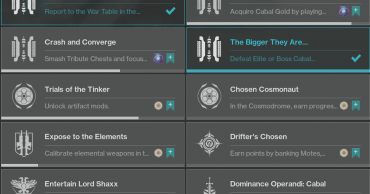
You may not have heard of DIGITALAX or ESPA before, and that’s okay, because I hadn’t either until I was introduced to it and the CEO, Emma-Jane MacKinnon-Lee. Emma-Jane has made a name for herself in the gaming world as she’s worked hard to pioneer what she and ESPA call “casual esports” and to shed a whole new light on indie developers, players, and modders, through the ESPA platform. So what is ESPA? According to the ESPA website, “ESPA is the first ever dedicated Esports platform for independent developers, modders, designers and casual players or gamers. It’s all about freeing players, modders, independent devs, designers to create new livelihoods for themselves no matter where they live. For the first time ever they are going to be able to genuinely monetize without requiring the usual industry-political approval. The ESPA Platform allows for indie devs and modders to easily plug in and enable players to start playing to win, creating a secure livelihood for each other in the process.” I got a chance to sit down with Emma-Jane to highlight what exactly the future goals and plans for ESPA and DIGITALAX are, and what she likes most about the platform!
Could you tell me a little bit about DIGITALAX? When was it founded? What is its purpose? How successful has it been so far?
Emma-Jane: “Sure, so I founded it in September last year, and we didn’t go live – officially – until around November/December of 2020. The purpose was really all about liberating gaming and fashion, and really establishing particularly the fashion industry on a digitally native layer, that could bring about value to developers, designers, players, [and] consumers interacting within the ecosystem, because before then, digital fashion didn’t really exist; it was very much an industry that was more on the outskirts and it was used very much for advertising purposes, so companies like Nike would engage with 3D modelers to craft up 3D models of their fashion items, and this is what you’d see in a lot of the advertisements and billboards, and promotional activities. When I looked at it last year, I was really looking at seeing the exponential growth of gaming and thinking ‘wow, this is definitely going somewhere’ and there’s a lot to gaming and we think about this idea of the metaverse and natively digital economies – how do we actually achieve that? Gaming is very much on a track for that, both in a technological and business sense, and then within that – looking at the market segment of digital fashion and really seeing how empowering this was to the broader scope of where we’re going [and] what it means to be digital. I mean, if you think about fashion and the traditional fashion industry, it’s really rooted and founded in self-expression; it’s been around for hundreds of thousands of years, and really core to society and the goal was ‘okay, well how do you translate that 3 trillion dollars of value in the traditional fashion industry – how do you translate that into digital’ and do it in a way that is sustainable – that it promotes economic wealth, jobs, job creation, livelihood, sustainability for digital fashion designer’s and brands to really come in and build in this space. So DIGITALAX started as a live marketplace for digital fashion, but for digital fashion NFTs [Non-Fungible Tokens], so my background is crypto and blockchain – I’ve been in this space for a long time and also very much engineering, so for me, having that background it really made sense to start with a first aim of ‘how do you create strong distribution channels for digital fashion and what does that look like? How do you actually back value behind these designs?’ NFTs are a really amazing natively distribution channel; they allow you to back authenticity and can create a container of measurable value behind a natively digital product and then authenticate that cryptographically on a blockchain, when it comes to ownership, when it comes to the IP rights and how you credit an original author or designer, and then also do that in a transparent way. So we started as that NFT marketplace, we partnered with over 30 digital fashion designers globally, some in Portland, others were based in Rwanda, Australia, and Europe, and they listed their designs and collaborated with us to create these fashion items, list them on our NFT marketplace, and sell them at auction. We did really well, we’ve had about only 6 auctions to date and over 600,000 and more in sales, which has been really exciting, and it’s been able to change the lives of these designers, but more than that – prove out digital fashion and the distribution channel within it.”
How did you decide to apply this to gaming?
Emma-Jane: “This was the next step of our platform, and really the exciting part was ‘okay, how do we take these digital fashion items into application and utility environments – which is very much gaming, VR, Live 3D, as we see it today’. So how we confronted this was ‘how do we go from the perspective of making sure that we can bring value to the gaming industry when we do this – how can we liberate players, how can we liberate developers, and provide extra use-cases and utility for their value within the industry as well’ and this is where we launched ‘ESPA’ which is a project under DIGITALAX, and it is the first indie and mod esports platform. So how it works is that players can come on our NFT digital fashion marketplace, they can purchase and use these unique NFT skins, then they’re spawned in-game under these indie game content or modded game content – which is what we’re really focusing on, is the mods as well – they spawn into the account, and the NFTs act as the ledger to authenticate the player in-game through their fashion item – or through their skin – the players start playing in these casual esports battles and by casual esports, I mean it’s not scheduled – it’s like anytime, anywhere, they log in, they get matched in the game, and they start playing, and they get scored on the leaderboard. The more winning streaks they get on this leaderboard, they can actually start getting paid out in our native cryptocurrency token [$MONA] and can actually start earning an income stream and livelihood from that. Where that value comes from is the profits from the sales of the NFTs in our marketplace, they get split between the digital fashion and skin designers creating the items, they get split between the developers or the modders showcasing their content and allowing players to come in and to plug into our system, and then they also get split between the winning players within these microtransactions and getting winning streaks between the battles. That’s really the scope of the ecosystem and how it works, and we just launched the beta of ESPA about 3 and a half weeks ago now, and we had $171,000 auction and total sales from the marketplace and full profits were split between the designers, developers, and then the ongoing esports Among Us mod battle tournaments that we’re having right now for the players.”
You mentioned your ‘native cryptocurrency’ $MONA, so this is a blockchain-based cryptocurrency?
Emma-Jane: “Yeah, so I’ll break that down. $MONA, or more technically what it’s called, it’s an ERC-20 utility token, which means it has active utility within our ecosystem. It’s used as a currency on the marketplace to purchase assets, it’s used as an income stream between the players, developers, and designers, getting the distribution of $MONA from the profits of the marketplace, and also it’s used as what’s called a ‘governance token’ within our ecosystem, so if you hold $MONA, you’re also holding voting power within our ecosystem. When we put up proposals, because we operate quite decentralized, and we’re moving towards progressive decentralization, where in the end, the players, developers, and designers, as part of the ecosystem, they will actually run everything. Going back to your question, cryptocurrency – it’s all based on the blockchain, which is the underlying technology that secures the transactions, so if I was to move that cryptocurrency from me to you, it would be the blockchain technology that would actually come to consensus that the transaction is correct and will let me transfer that one cryptocurrency to you. $MONA is based on the Ethereum blockchain.”
You said that this was all based within the ESPA ecosystem, does that mean that $MONA doesn’t actually hold any real world value?
Emma-Jane: “Good question, yeah, so every cryptocurrency is hard to define, because we’re dealing with native digital assets, there’s no physical backing. Crypto really is the value of the market that determines what the value is – it’s what’s traded on the market that really determines that value. We’re not defined as a stock or an investment – we are defined as a utility, which means that when people use it, they can actually do something within our ecosystem, so it really is within our ecosystem where it holds the most value, but in saying that as well, it really is about having that income stream as well, so they have that value there by holding that token, but they can also choose to natively swap that with other digital currencies and interact with other digital ecosystems as well.”
Your “holy trinity of play” includes developers, designers, and players, why do you feel that these three types of people are the most important on which to focus peoples’ attention?
Emma-Jane: “Really good question, I guess when you think about the industry that we’re in – which is at the hybrid of fashion, gaming, or just 3D real-time content applications, these three core participants in the market, these are what create that full life-cycle of value between the actual supply and demand; who is actually creating the supply of the assets within these natively digital environments, it’s very much the designers which [make] the skins in the digital place in the digital fashion items, and it’s developers as well which are hosting the game content, and by developers, I really mean modders as well, it’s not just constrained there – and that covers everything from within that gaming environment like the technical artists to the publisher, really subsetting all of that, using that as a broader definition. The players as well, which are the key interactors within this ecosystem and driving a lot of that demand, and by players I don’t just mean the typical hardcore gamer – or even casual gamers – and even, not to sound cheesy, but really where we’re going it’s like every human is a player. I mean, what’s the number something like almost 3 billion players globally? That’s crazy. So it’s really about that side as well; the players meaning the interactors in the ecosystem that come in, they use the fashion, they go in the content, and they start engaging [in] the esports battles.”
What is your personal favorite part of ESPA? Do you like to participate with the community, or do you prefer to watch everything unfold from behind the scenes and really let everyone else in the community take control of what goes on?
Emma-Jane: “Good question. No, I’m very active, I can tell you. This role that I’m in – and I don’t want to call it a job, because it’s my passion. It’s 24/7, it’s very much not about sitting behind the scenes and just kind of watching things happen; it’s extremely active and I’m on the ground, in the Discord, talking with 14 year-olds to 20 year-olds to above my age every day, gifting them Discord Nitros in the server – really active. This is a huge part of what we’re building, the mission is about how to really liberate fashion and gaming and how do you do that with mod culture as well, and really include and highlight that. That’s really important, as I’m sure you know, fashion and gaming are some of the most explosive industries in the world when you think about how toxic the gaming industry is and you think about how toxic and cutthroat fashion is – really with all of this it’s about how to create an ecosystem that really unlocks that value. How do you do it in a way that every participant and developer can really plug in; they can feel like they’ve got that support there, and they are actually able to go from amateur to pro – whatever that looks like – and level up from stage zero to one, that’s really what we’re creating here, and that requires me to be extremely active, it requires me to put myself out there and on the front line as well. It’s not a role of just sitting back and letting it happen – it’s husting, it’s making sure that we’re on track. When you asked what’s my favorite part – really it is that we’re highlighting what I mentioned a lot throughout this, is that we’re highlighting mod culture, which is super interesting and super important. Modding has been around for almost as long as the gaming industry, it’s got such a vibrant, active community, and it really sits at the core of collaboration, it sits at the core of community; it’s built around values against exploitation, against toxicity. Really the amazing thing as well is that modding has very much built the castles of a lot of the developers and a lot of the viral AAA or indie games that we see today, even to take Among Us, for example, we focused on the mods of that for our first launch and the esports tournaments, it was really about how do you highlight the modders as well. How do you do it in a way that still allows the original developers to be brought into the ecosystem and create value for themselves – additional to the modders and parallel to the modders – because they’re really the core ecosystem that makes a lot of what we see in gaming have that liquidity, have that player devotion and fan devotion and as I said with Among Us, they launched in 2018 and no one really cared, but then it was 2020 when the whole scene blew up so much and that was really due to the modding community. It’s amazing how active they are, with Discord channels, with the amount of content that’s put out on YouTube and Twitch, when you think about streamers and what they’re playing, it’s all about the mods that really sustain the ecosystem of what keeps that novelty injection into the game. So that’s probably my favorite part is that we’re pioneering that as well, and really uplifting the whole modding culture and the whole modding ecosystem and making sure that stays very much at the heart of what we’re liberating along with the broader components.”
Thanks so much, Emma Jane, for taking the time to talk to me and go into a bit of a deep dive about ESPA and DIGITALAX! Now that you know a bit more about what ESPA is all about, will you be taking the next step into your gaming adventures and begin to participate in some “casual esports” tournaments with ESPA?
 Follow Us
Follow Us




